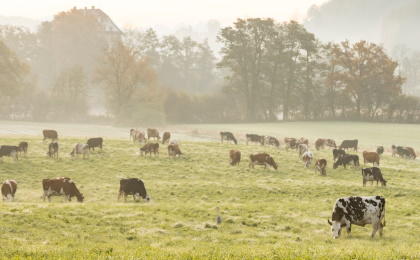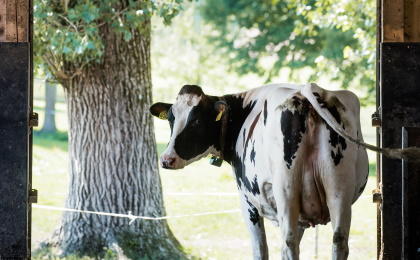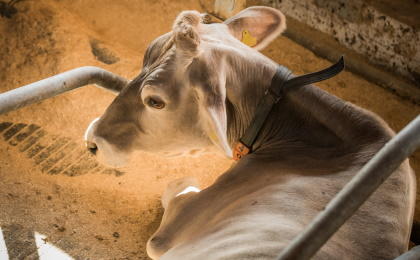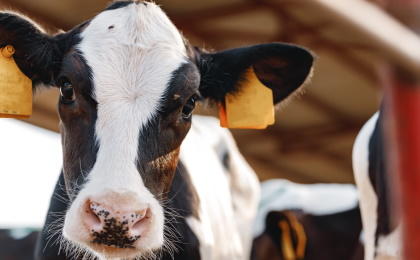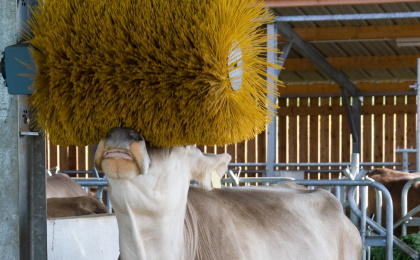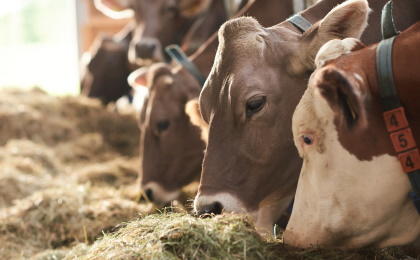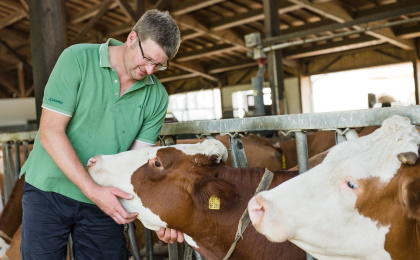

Pasture program
The Hochland Pasture Program specifically encourages grazing on meadows. We developed the program in 2021, setting a standard with clear criteria that we believe reinforce the positive impact of grazing on animal welfare. Compliance with these criteria on the participating farms is regularly monitored by an independent testing institute.
